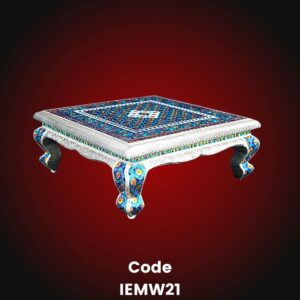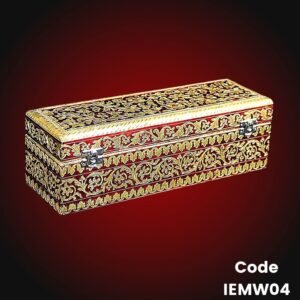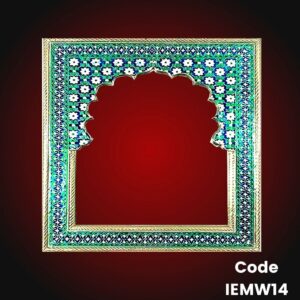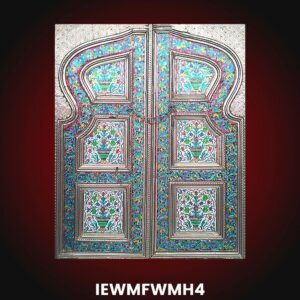This Low wooden seat or decorative White Metal octagonal Chowki with Meenakari in red is 10 inches high and octagonal structure is 21 inches across sides. Chowki is a traditional piece of furniture from the ancient Indian Households. The Chowki is still extensively used for offering prayers and low seating arrangements. This piece has White Metal coating on octagonal wooden top. The top has alternate layers of different meenakari art designs. The center has red and yellow floral patterns surrounded by white lacquered layer with red patterns further surrounded by vine creeper design in blue. The legs of Chowki has vine creeper design in red and blue.
Iliziencraft’s Collection
Our collection of Meenakari Handicrafts is quintessentially Rajasthani art and has vibrant colors and traditional designs. The collection is also in line with the latest trends in international Interior Décor. Accordingly, the pieces blend well with both traditional and modern décor trends. Please contact us to know more about this White Metal Chowki with Meenakari or other products of our collection.
Origin of Meenakari Art
The word Minakari or Meenakari originates from the words Mina and Kari. As in, Mina is a feminine variation of the word minoo which means paradise or heaven.
Essentially, Meenakari is the art of decorating metal with enameling. Enameling involves colorings or decorating a metal surface by attaching or fusing pieces of different mineral substances over it. Thus, enameling is the most alluring and technical of all metal decorations.
The art of enameling metal for ornamental reasons dates back to the Parthian and Sassanid period of Iranian or Persian history. However, in India, the meticulous ornamental work of today can be traced back to the 15th century when it was introduced by the Moghuls. Subsequently the Indian craftsmen perfected the technique and made the designs more intricate.
In the 16th century, Raja Man Singh of Amber brought Meenakari From the Mughals to Rajasthan. He brought skillful minakars from Lahore and established them in Jaipur, which subsequently became the center of Meenakari.
Meenakari Handicrafts
The history of metal craft in India dates way back to the Indus Valley Civilization. Over time, Indian craftsmen became experts at working magic with metal to create beautiful pieces. The tradition has continued over generation and even now, Indian craftsmen create beautiful sculptures, utensils, vases, ornaments and boxes. They use metals like iron, copper, silver as well as alloys like bell metal, white metal, and bronze to create handicrafts. The Meenakari craftsmen, subsequently, color and decorate the surface of these metals using brilliant colors and intricate designs.






